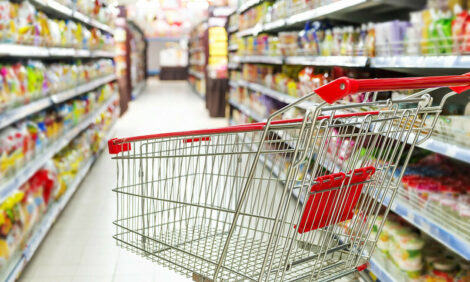



Americans curb food spending as the holiday season approaches - CoBank
Grocery price increases have slowed, but still remain highDuring earnings calls over recent quarters, consumer packaged good food and beverage brands have lamented loss of share and low volume sales, according to the most recent quarterly market report from CoBank.
Circana forecasts an uptick in volume sales over the course of 2024, but that is not necessarily translating into higher volumes for national brands. And with the holiday season set for an early start, consumer cost-cutting behaviours will likely persist at least through the fourth quarter, pushing any real volume recovery for national brands into the new year.
The traditional holiday shopping window is shorter than usual this year with Thanksgiving on Nov. 28, so mass merchandisers are kicking off promotions earlier than ever: Both Walmart and Target will begin their holiday seasons in early October.
In addition, holiday spending forecasts are modest: Mastercard expects consumers to be “picky about their spending this year” and pegs US retail sales growth at 3.2% this holiday season (vs. 3.1% in 2023). Deloitte predicts holiday retail sales growth will be at the slowest pace in six years. Analysts expect aggressive deals. With the shopping season beginning earlier, however, consumers are likely to be even more aware of their spending – not only on gifts, but on essentials – and continue holding their costs in line.
In the grocery arena, price increases have slowed, but a variety of segments are still well ahead of pre-pandemic levels. Prices for cereals and bakery products have climbed about 25% since 2020, while fruits and vegetables are up 14%, notes Circana. While some recovery is expected in volume sales for retail food and beverage in 2024, this follows three years of declines.
Nevertheless, FMI - The Food Industry Association finds grocery shoppers a bit more confident in their ability to afford groceries compared to one year ago. While nearly 4 in 10 (39%) still express concern about affording the food they need, that is fewer than the 42% sharing that sentiment in 2023. Consumers remain wary, though. Despite indications that inflation’s growth is slowing, nearly 70% of respondents are very or extremely concerned with retail food inflation, and 68% reported concerns with rising prices on foods they prefer, up 6 percentage points from last year.
Grocery shopping behaviours will continue to reflect those concerns, with couponing and deals a particularly popular option for consumers, and one that national brands are likely to use. However, dining out less and extending meals through freezing or creatively using leftovers are evidence that value is still top of mind for consumers and likely will keep them seeking the most cost-effective solution at least through the holidays and into the new year.
As such, expect the growth in grocery store foot traffic not only to remain strong, but to continue to outpace that of restaurants, despite the uptick in value menu promotions.
Nearly 9 in 10 (86%) eating occasions remain sourced from home, per Circana’s “Eating Patterns in America,” 3 percentage points above pre-pandemic levels. Yet, consumers are not solely dining at the dinner table. With a notable increase in snacking away from home, CPG brands will continue to focus innovation and R&D on portability and portion sizing.



